All products featured are independently chosen by us. However, SoundGuys may receive a commission on orders placed through its retail links. See our ethics statement.
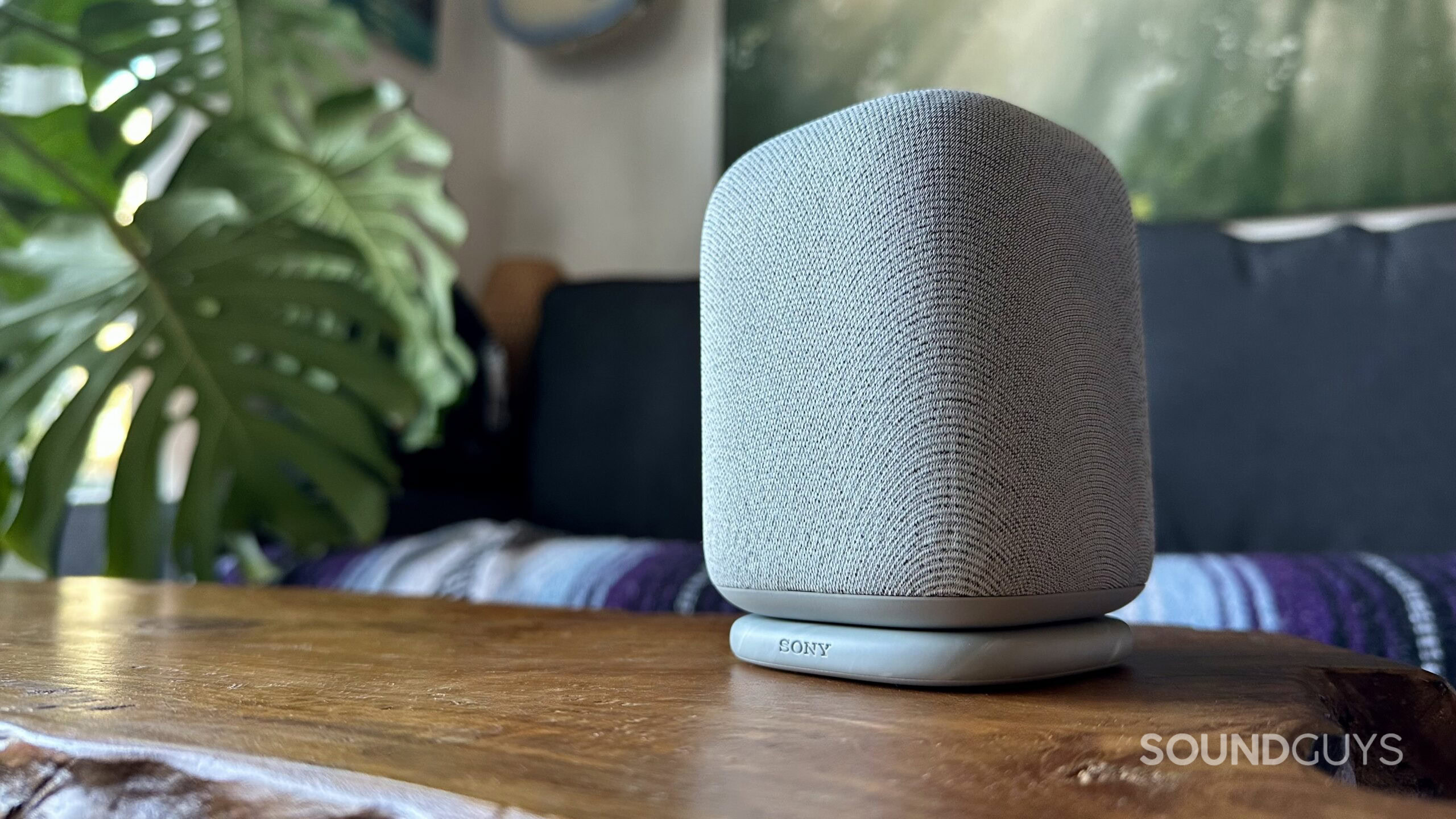

Sony LinkBuds Speaker review
Published onNovember 14, 2024


Sony LinkBuds Speaker
Sony has been busy refreshing and expanding its LinkBuds lineup of products, which now includes the new portable LinkBuds Speaker. Boasting “total clarity” in a compact package and the ability for existing LinkBuds earbuds users to seamlessly switch back and forth between their earbuds and speaker, is this the start of a new Sony Ecosystem? Let’s find out if this speaker is the missing link in this Sony LinkBuds Speaker review.
Editor’s note: this is the first version of the article. Updates will follow as the market changes.
With its sleek design and charging cradle, the LinkBuds Speaker is an excellent speaker to use around the house. It won’t look out of place in your living room, but you can still easily take it to the backyard. Existing LinkBuds earbuds users will benefit the most from this speaker; it offers seamless switching between the two devices.
What’s it like to use the Sony LinkBuds Speaker?
The Sony LinkBuds Speaker arrives with a relatively neutral and understated look as if it were straight out of an IKEA catalog. Our test model is wrapped in a light grey cloth finish, but it’s also available in black. It’s not much bigger than a can of soup, and with its sleek design, the LinkBuds Speaker blends into your home decor pretty easily. This is not your typical outdoor-oriented Bluetooth speaker covered in rubberized silicone. That said, the LinkBuds Speaker still offers an IPX4 water resistance rating, so it’s safe to bring out to the balcony or backyard if you’re entertaining.
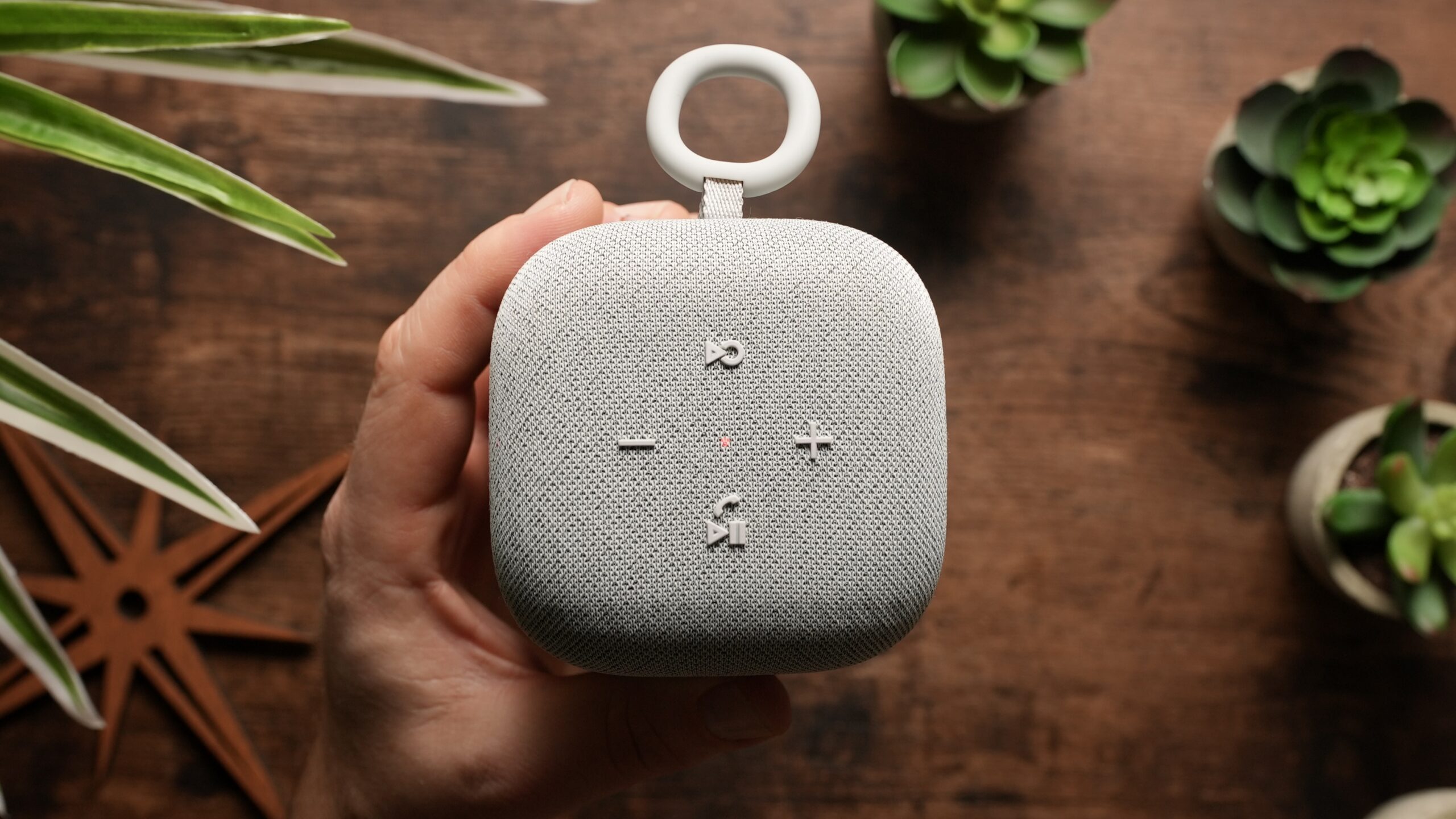
If you can’t live a minute without your favorite music playing, one of the LinkBuds Speaker’s main features is a seamless transition of your music to any pair of LinkBuds earbuds. When listening to your music on the LinkBuds Speaker, cracking open your LinkBuds earbuds will automatically switch your tunes over to your earbuds. You will need to pair both devices to the Sony Sound Connect app to achieve this, and I find it switches over almost instantly, even with a pair of original Sony LinkBuds.
The LinkBuds Speaker also comes with a handy charging cradle. This cradle will keep your speaker’s battery charged while you use it at home, and you’ll have peace of mind knowing that your speaker is fully charged when you’re ready to head out to the park. While Sony supplies a lengthy cable to use with the charging cradle, unfortunately, it’s USB-A to USB-C, and they don’t provide a wall adaptor. I can live without the wall adaptor, but a double USB-C cable would be a welcome addition to this setup.
The Sony LinkBuds Speaker operates via physical controls located on the top of its enclosure. Below is a breakdown of how they perform:
| Action | Power button | Volume - | Volume + | Play/Pause/Phone | Bluetooth button | Quick Access button |
|---|---|---|---|---|---|---|
| Action One Press | Power button Power on | Volume - Volume - | Volume + Volume + | Play/Pause/Phone Play / Pause / Answer or End call | Bluetooth button Enter pairing mode | Quick Access button Access Spotify/Amazon Music |
| Action Press and hold | Power button Power off | Volume - Rapid Volume - | Volume + Rapid Volume + | Play/Pause/Phone | Bluetooth button | Quick Access button |
| Action Press x2 | Power button | Volume - | Volume + | Play/Pause/Phone Skip track | Bluetooth button | Quick Access button |
| Action Press x3 | Power button | Volume - | Volume + | Play/Pause/Phone Previous track | Bluetooth button | Quick Access button |
Should you use the app for the Sony LinkBuds Speaker?
You should download and install the Sony Sound Connect app to fully utilize the LinkBuds Speaker, which has plenty of features to check out. Here, you’ll find your EQ options. While it only allows you to save two custom EQ presets, with the addition of the “Clear Bass” slider, you can access a 6-band customizable EQ, which you can use to personalize the sound of your LinkBuds Speaker.
This is also where you can configure your LinkBuds earbuds to auto-switch the output from the speaker to your earbuds, set up your Quick Access button actions like Spotify Tap, access multipoint connection, and modify some of the LinkBuds Speaker’s default settings, like Auto Power Off and Bluetooth Standby mode.
How does the Sony LinkBuds Speaker connect?
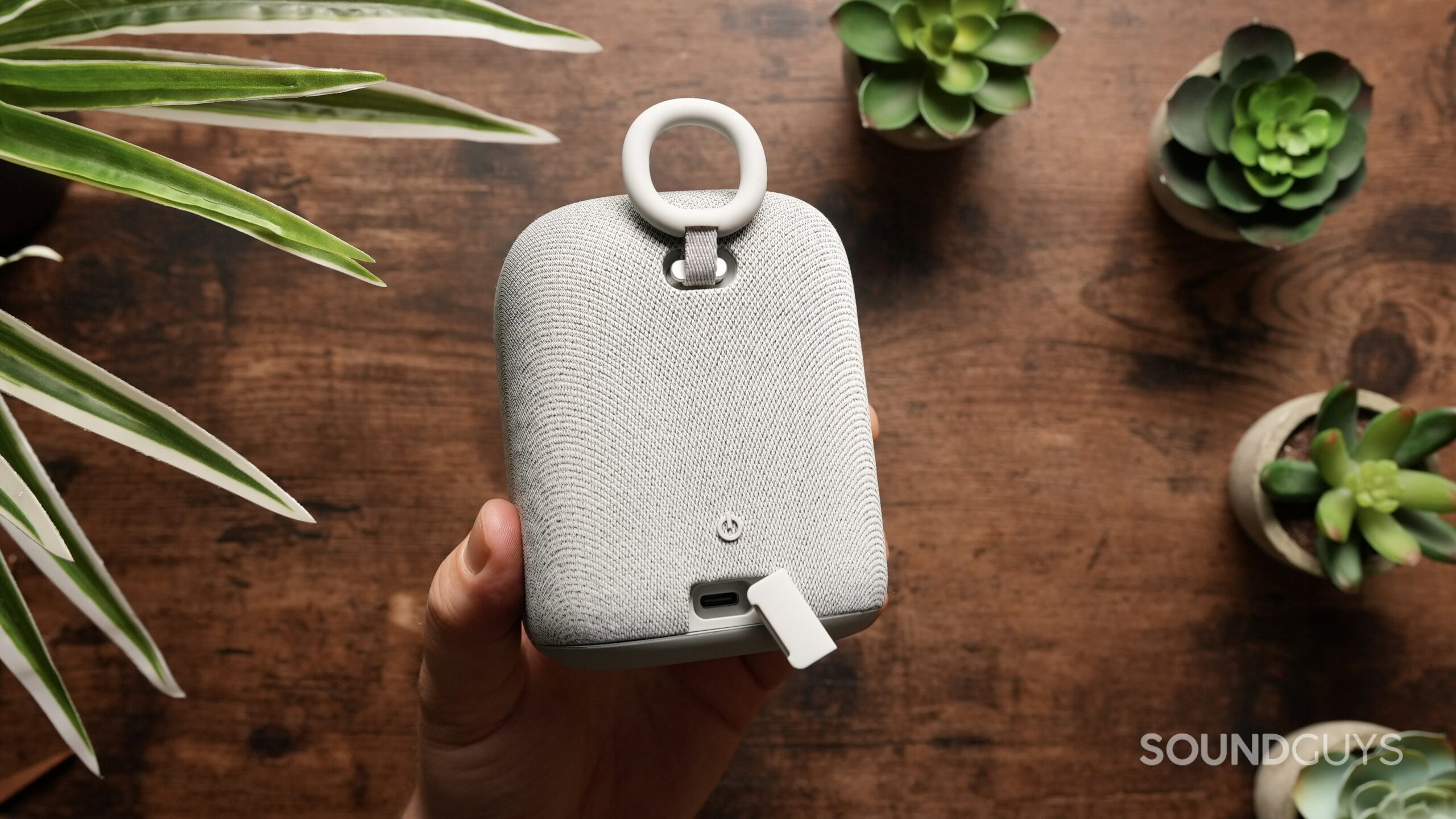
The Sony LinkBuds Speaker connects to your device via Bluetooth 5.2 and supports SBC and AAC codecs. In the companion app, you can select between “Priority on Sound Quality” and “Priority on Stable Connection.”
“Priority on Sound Quality” provides compatibility with both SBC and AAC, and the LinkBuds Speaker will automatically select the optimal codec. However, if you are experiencing connection issues, “Priority on Stable Connection” will automatically default to the SBC codec.
Pairing the Sony LinkBuds Speaker is easy and follows the usual steps as outlined below:
- Turn on the LinkBuds Speaker and press the Bluetooth button on the bottom of the enclosure.
- Open Bluetooth settings on your device
- Select LinkBuds Speaker
- Download and install the Sony Sound Connect app for further control of the LinkBuds Speaker
How long does the Sony LinkBuds Speaker’s battery last?
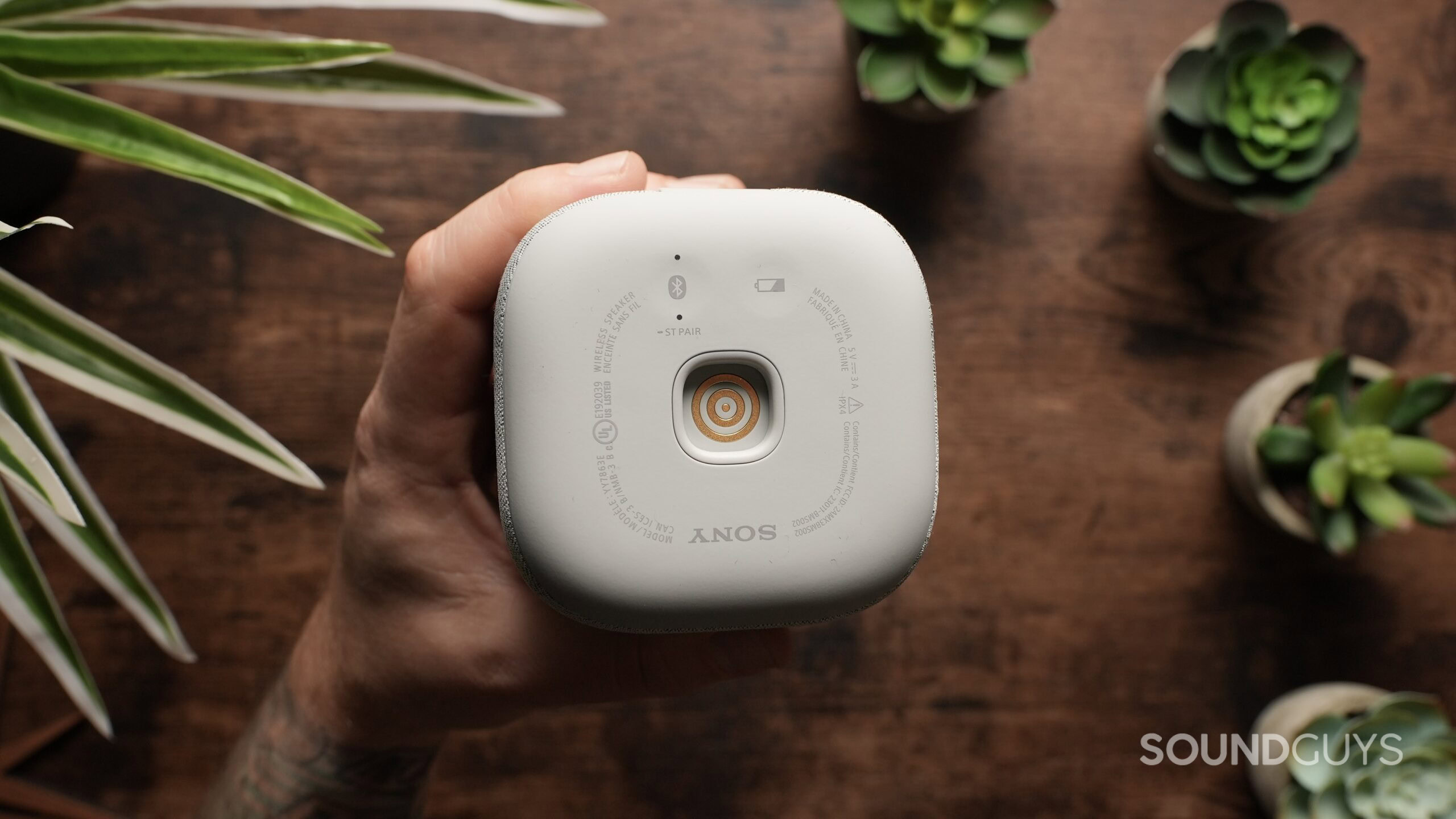
Sony advertises 25 hours of playback off a single charge. However, with the dock, you won’t have to worry about running out of battery at home. It also offers a quick charge feature; Sony states that 10 minutes will get you an additional 70 minutes of playback.
How does the Sony LinkBuds Speaker sound?
The Sony LinkBuds Speaker offers good sound and, with a quick tweak of the EQ, a decent bass response considering its small size.
Multi-Dimensional Audio Quality Scores (MDAQS)
The chart below shows how the sound of the Sony LinkBuds Speaker was assessed by the Multi-Dimensional Audio Quality Score (MDAQS) algorithm from HEAD acoustics.
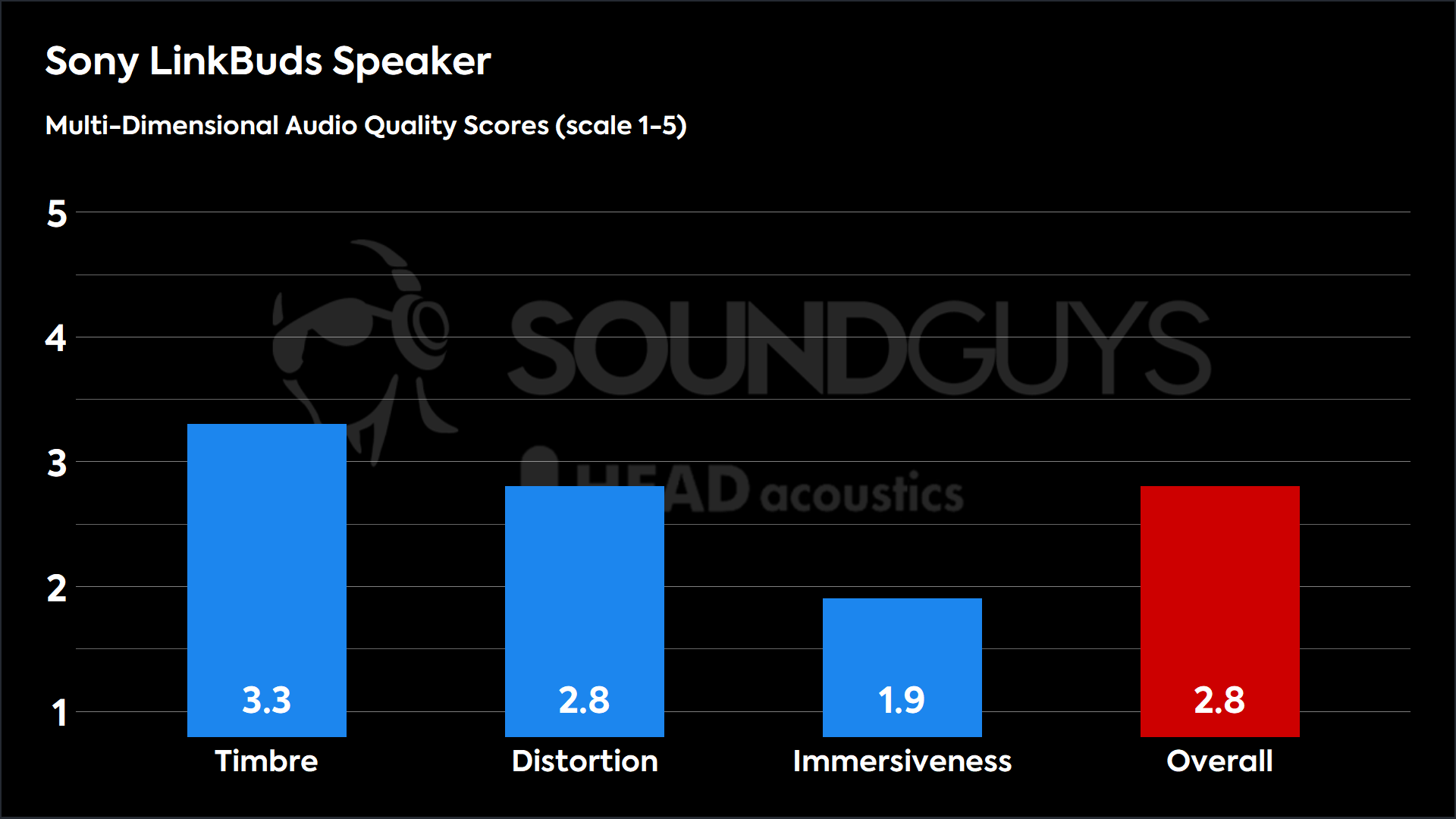
Regarding MDAQS, the Sony LinkBuds Speaker walks away with an overall score of 2.8, but it’s nothing to fret about—this is the average for portable Bluetooth speakers. For reference, the Sony ULT Field 1, a dedicated outdoor Bluetooth speaker, has an overall score of 3.1, and even larger speakers with several drivers, like the Anker Souncore Motion X600, can only achieve an overall score of 2.6 (with BassUP and Spatial Audio engaged). The LinkBuds Speaker offers an acceptable performance for most listeners by this measure.
Timbre (MOS-T) represents how faithfully the speaker reproduces the frequency spectrum and temporal resolution (timing information).
Distortion (MOS-D) represents non-linearities and added noise: higher scores mean cleaner reproduction.
Immersiveness (MOS-I) represents perceived source width and positioning: how well virtual sound sources are defined in three-dimensional space.
See here for an explanation of MDAQS, how it works, and how it was developed.
Reviewer’s notes
Editor’s note: this review uses a hover-enabled glossary to describe sound quality based on a consensus vocabulary. You can read about it here.
Yes, while it’s becoming rarer and rarer these days, the LinkBuds Speaker has a built-in microphone for taking phone calls.
Should you buy the Sony LinkBuds Speaker?
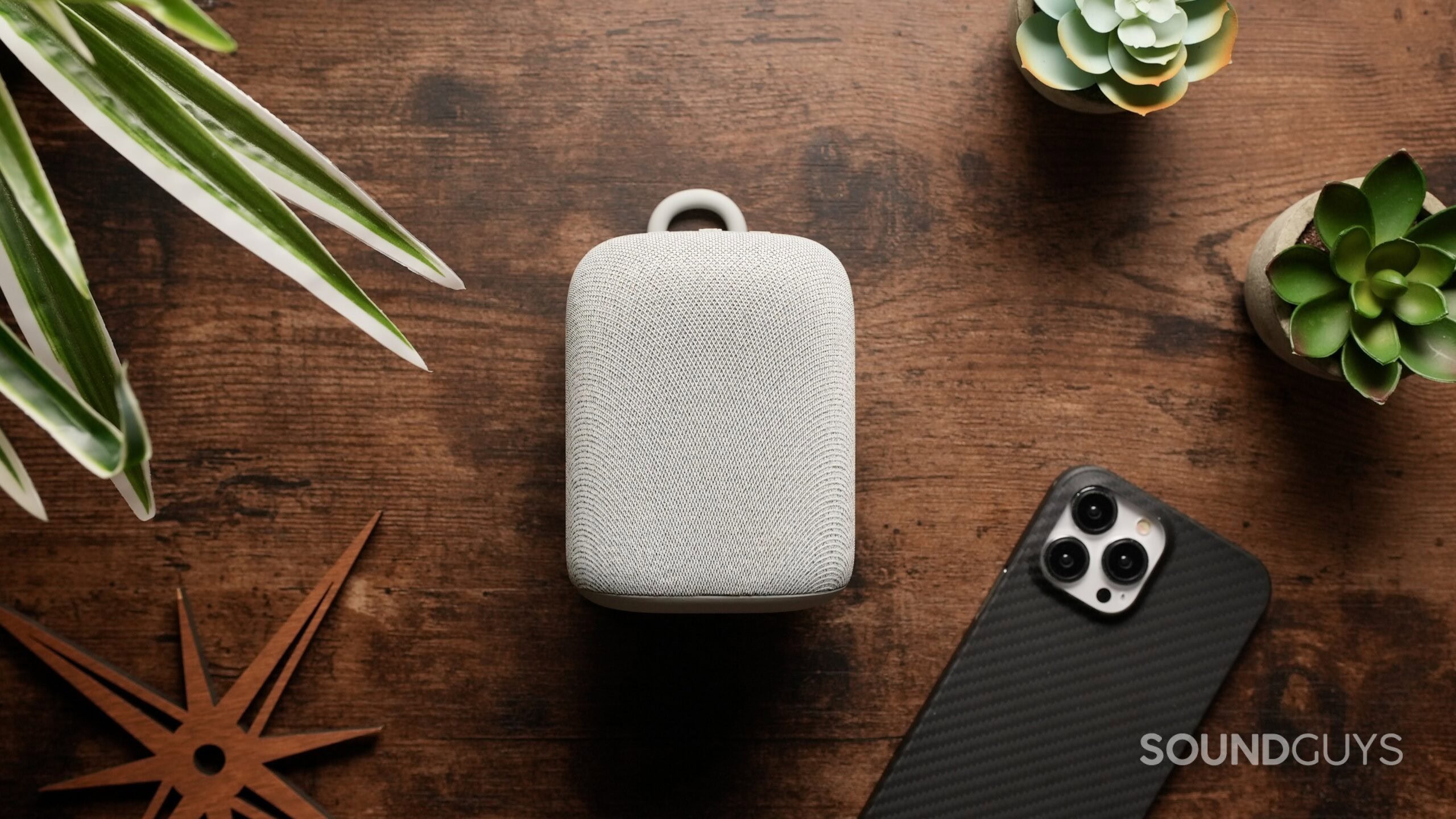
If you already own a pair of Sony LinkBuds or perhaps you enjoy the simplistic design of the LinkBuds Speaker and are eyeing it up for your living room, the LinkBuds delivers decent performance in a small package. There are cheaper Bluetooth speakers out there, but its charging dock is convenient, and the companion app offers a good number of useful features.
That said, while its IPX4 protection rating offers some protection against splashes of water, it’s not an ideal choice if you regularly go to the beach or camp. You’ll want to consider a more durable, outdoor-oriented speaker for your outings.

What should you get instead of the Sony LinkBuds Speaker?
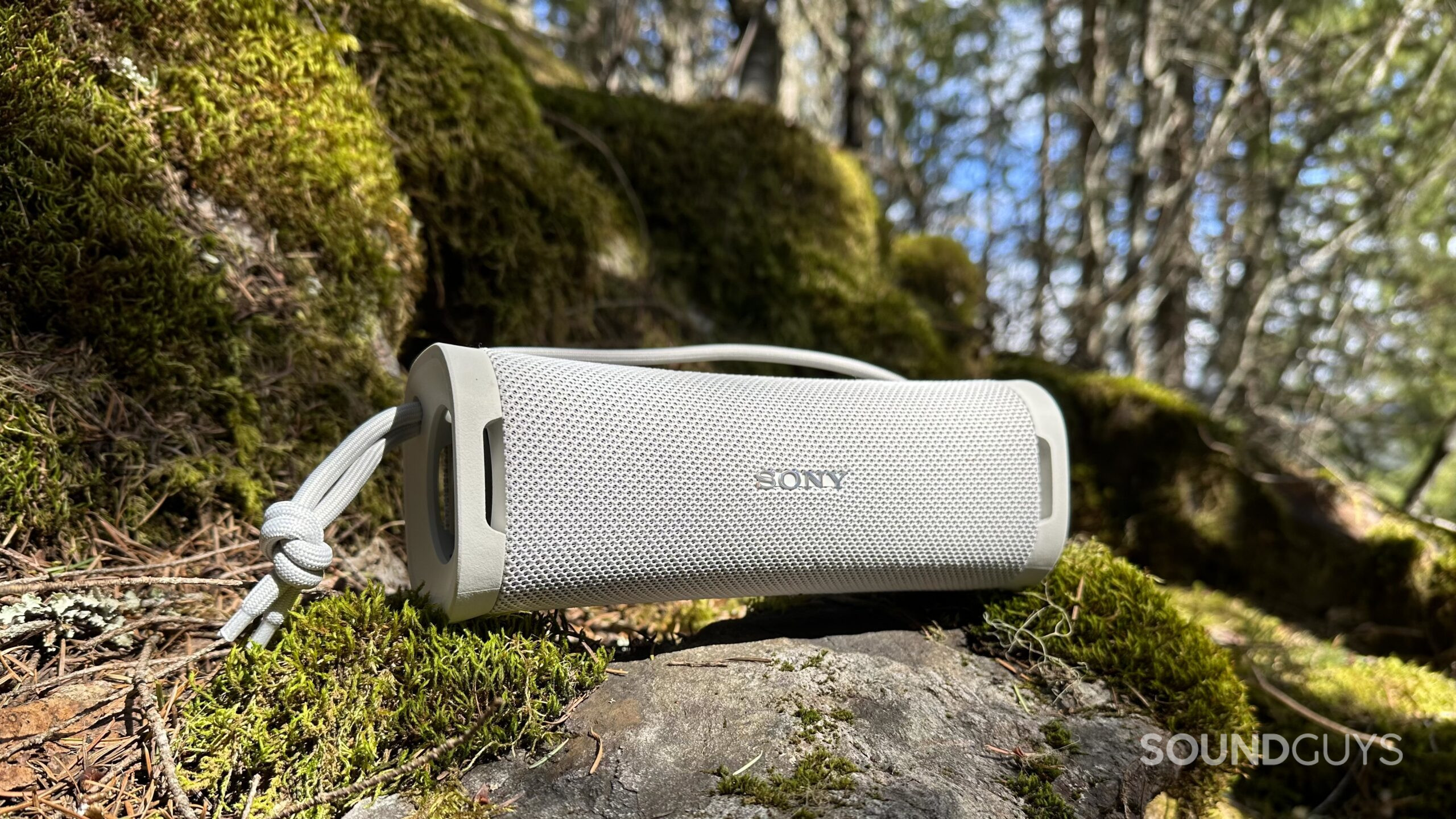
If you’re looking for a portable speaker that’s a little more durable for use outdoors, save a few bucks and consider the Sony ULT Field 1 ($129.99 at Amazon). This built-to-go-anywhere speaker is drop-proof and rust-proof, not to mention water and dust-resistant, thanks to its IP67 protection rating. Its rope attachment also offers a variety of placement options wherever you may find camp.
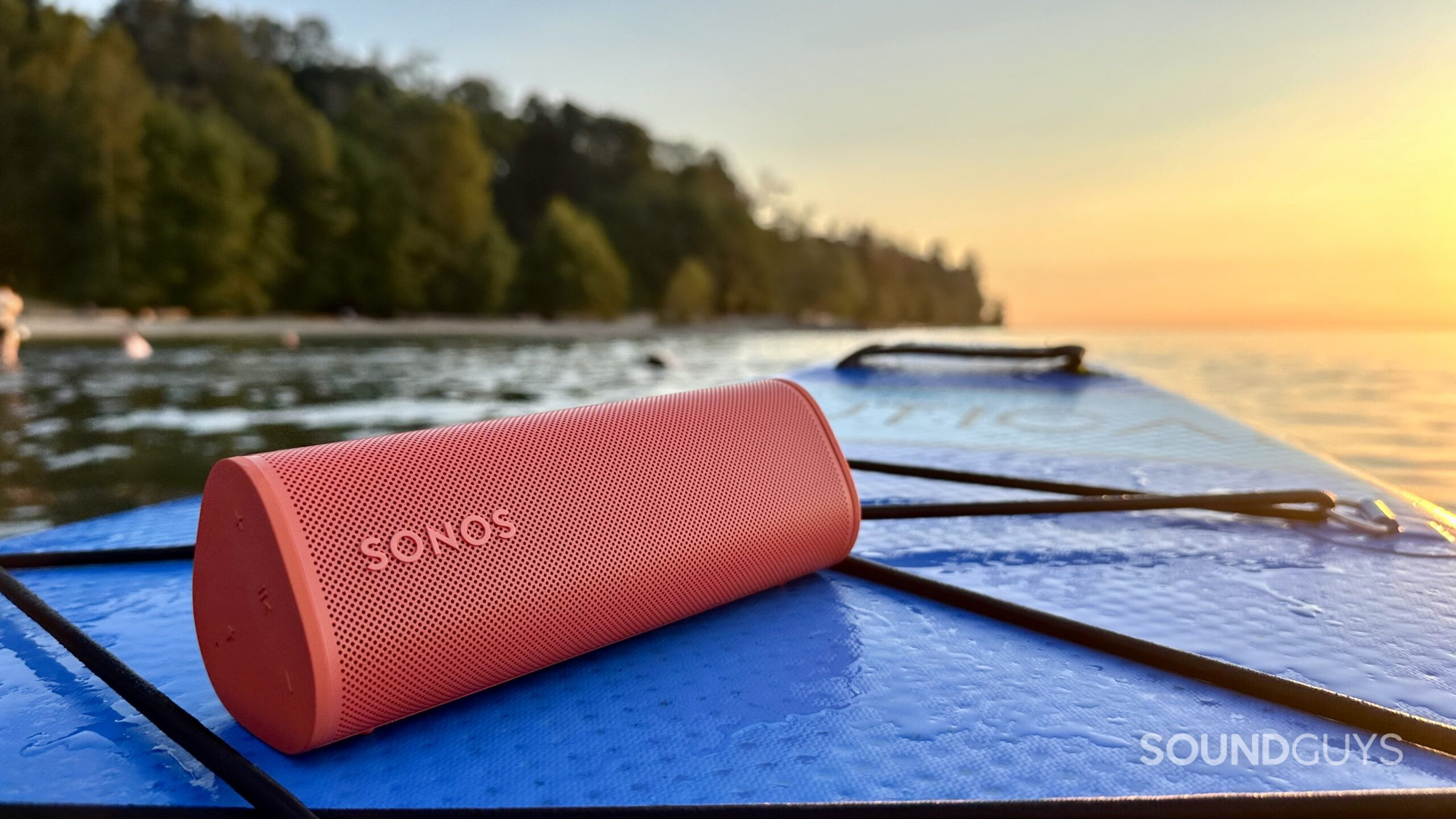
If you like the idea of a living room-friendly-looking Bluetooth speaker you can also take outdoors, the Sonos Roam 2 ($179 at Amazon) is worth a look. It offers a sleek design that won’t look out of place around the house but is still outdoor-ready with its IP67 protection rating. The Roam 2 also offers Wi-Fi connection for higher-quality- streaming options and even voice commands. Still, unfortunately, Sonos is known for its buggy companion app, and the Roam 2 is no exception.
Frequently asked questions
No, but you are supplied with a charging dock, which is powered via USB-C.
With its IPX4 water resistance rating, the LinkBuds Speaker can resist splashes of water, but is not submersible in water.
Yes, if your TV offers a Bluetooth connection.
Sony advertises 25 hours of playback off a single charge.
Yes, you can pair two LinkBuds Speakers for stereo performance.
Yes, the LinkBuds Speaker can be left on its charging cradle without issue.
No, the LinkBuds Speaker is not compatible with the Sony Wireless Surround feature.